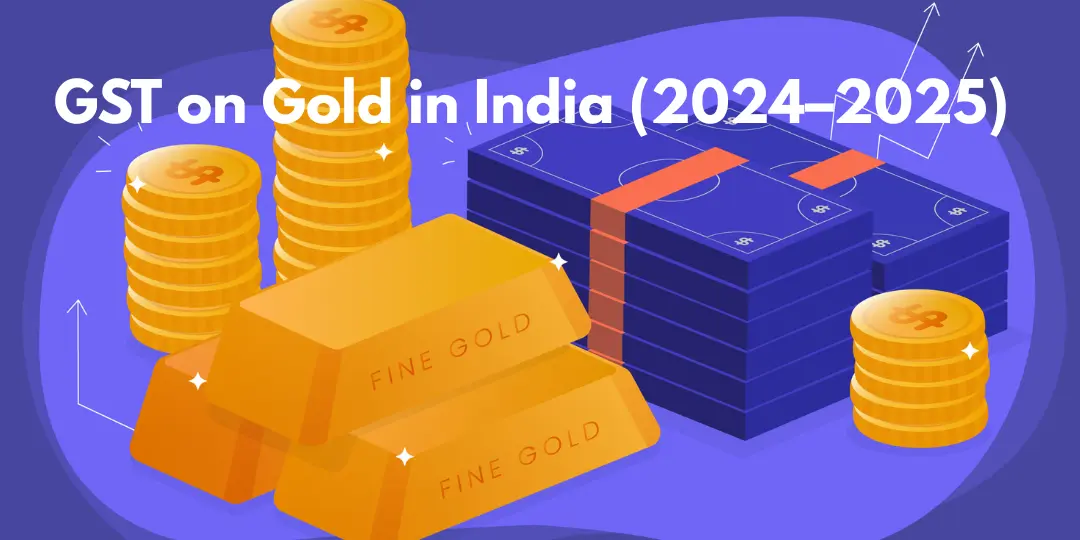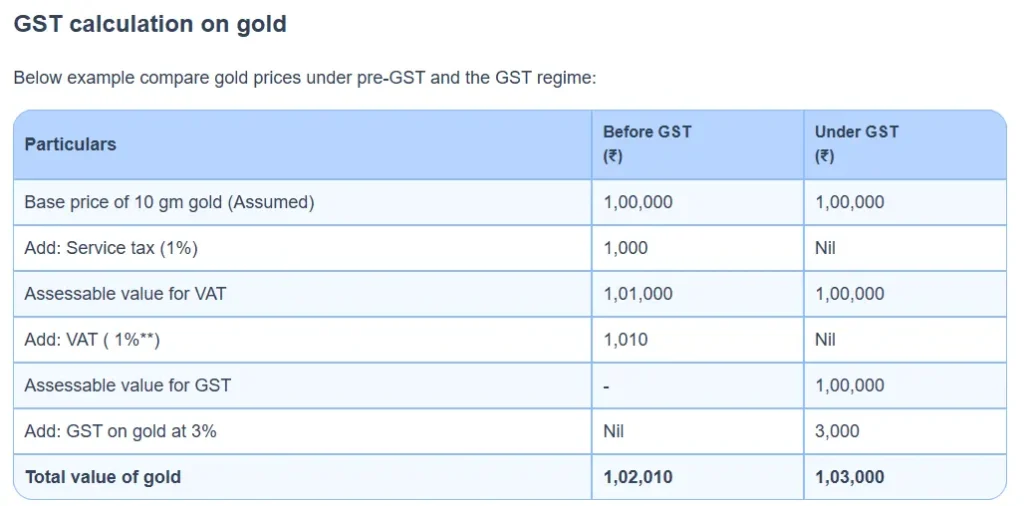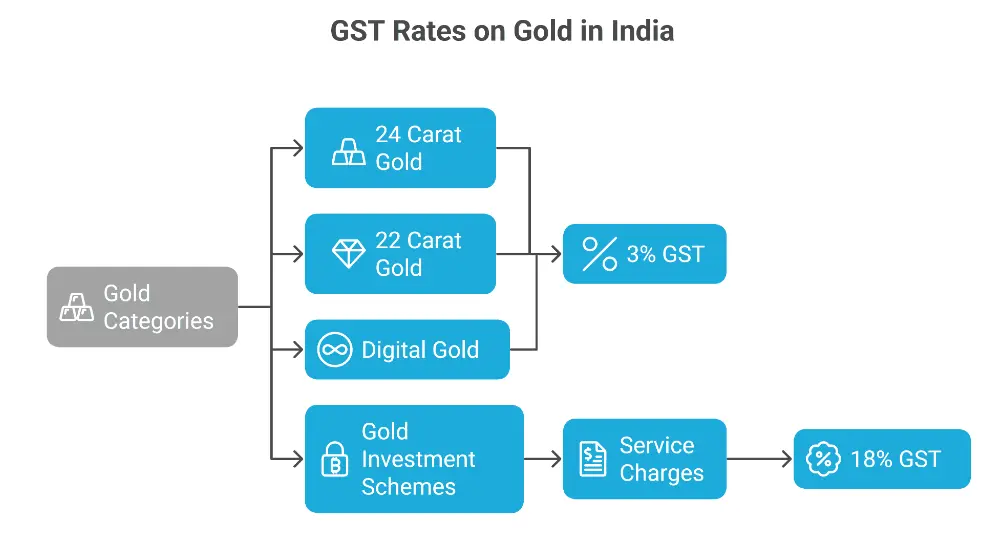
GST on Gold in India (2024–2025): Everything You Need to Know
Gold has always held a special place in Indian households — whether as an investment, ornament, or a symbol of heritage. However, the introduction of Goods and Services Tax (GST) has brought significant changes to how gold is priced, sold, and taxed across the country.
If you’re planning to buy gold — whether it’s jewelry, coins, or digital gold — understanding the GST implications can help you make better purchasing decisions and avoid being overcharged.
What is GST on Gold?
GST (Goods and Services Tax) is a unified tax structure introduced to simplify the indirect tax system in India. It applies to almost all goods and services — and gold is no exception.
In gold’s case, GST is not just levied on the metal itself, but also on:
- Gold value (3%)
- Jewelry making charges (5%)
- Import of gold (10.75% including customs duty + GST)
GST Rate Table for Gold (2024)
| Type of Gold/Product | GST Rate |
|---|---|
| Gold bars, coins, and ornaments | 3% |
| Jewelry making charges | 5% |
| Goldsmith services | 5% |
| Gold import (with duties) | 10.75% |
| Precious stones (semi-finished) | 0.25% |
| Job work (jewelry-related) | 1.5% |
Example: GST Calculation on Gold Jewelry
Let’s say you’re buying a 10-gram gold chain.
| Parameter | Value |
|---|---|
| Gold Rate per Gram | ₹6,385 |
| Cost of Gold (10g) | ₹63,850 |
| Making Charges (₹500/g) | ₹5,000 |
| GST on Gold (3%) | ₹1,915.50 |
| GST on Making Charges (5%) | ₹250 |
| Final Cost | ₹71,015.50 |
👉 Tip: Always ask for a detailed bill showing gold rate, making charges, and GST separately.

How GST Has Affected Gold Prices
POSITIVE IMPACTS
- Improved transparency in gold trade.
- Input Tax Credit (ITC) available for registered dealers.
- Standardized billing practices across the industry.
CHALLENGES
- Overall price increase due to a jump in tax from earlier 1.2% to 3%.
- Unorganized sector still struggles with compliance.
- Risk of smuggling and off-the-books sales due to higher costs.
Pre-GST vs Post-GST: What Changed?
| Particulars | Before GST | After GST |
|---|---|---|
| VAT | 1% | Nil |
| Service Tax | 1% | Nil |
| GST on Gold | Nil | 3% |
| GST on Making Charges | Nil | 5% |
| Customs Duty | 10% | 10% |
While the total effective tax has increased post-GST, the structure is now more streamlined and transparent.

Use our free GST calculator to find out the exact GST on gold purchases.
What About Digital Gold?
Buying gold online? You’ll still pay 3% GST, just like physical gold. The benefit?
- No storage hassles.
- Instant transactions.
- Secure vaults backed by reputed platforms.
- No extra GST is charged during resale or redemption — it’s already included at the time of purchase.
E-Way Bill Rules for Gold
As of September 13, 2022, states have the option to mandate e-way bills for gold transport. This means:
- Registered sellers must generate e-way bills for gold/jewelry transportation.
- Some states have their own rules, so always check local GST norms before moving gold.
GST on Used Gold or Second-Hand Jewelry
Buying old gold from individuals? Here’s how GST applies:
- If you buy from an unregistered individual, GST is applied only on the margin (difference between buy and sell price), as per Rule 32(5) of the CGST Rules.
- If you buy from a registered seller, GST is applicable on the full value, but you can claim Input Tax Credit (ITC).
GST Exemptions on Gold
According to the 31st GST Council Meeting, gold supplied by government-approved agencies to registered jewelers is exempted from GST — a boost for the export sector.
However, this exemption doesn’t apply to regular buyers or domestic gold purchases.
Popular Advance Rulings (AAR) on GST and Gold
- Attica Gold Pvt. Ltd. (2020) – GST applies only to the margin when buying used gold from individuals.
- Biostadt India Ltd. (2018) – Gold coins given under a sales promotion scheme are considered taxable supplies, not gifts.
Key Takeaways for Buyers
- Always ask for an itemized invoice.
- Ensure the gold is BIS hallmarked.
- Know the GST rates: 3% on gold, 5% on making charges.
- When exchanging old jewelry, ensure the correct GST is applied.
- Digital gold is taxed at 3% GST, no extra charges on redemption.
Final Thoughts
GST has changed how gold is bought, sold, and traded in India. While prices have gone up slightly, the industry has become more transparent and regulated. Whether you’re buying gold jewelry for a wedding, investing in coins, or trading digital gold — knowing the GST impact helps you stay compliant and make smart choices.

